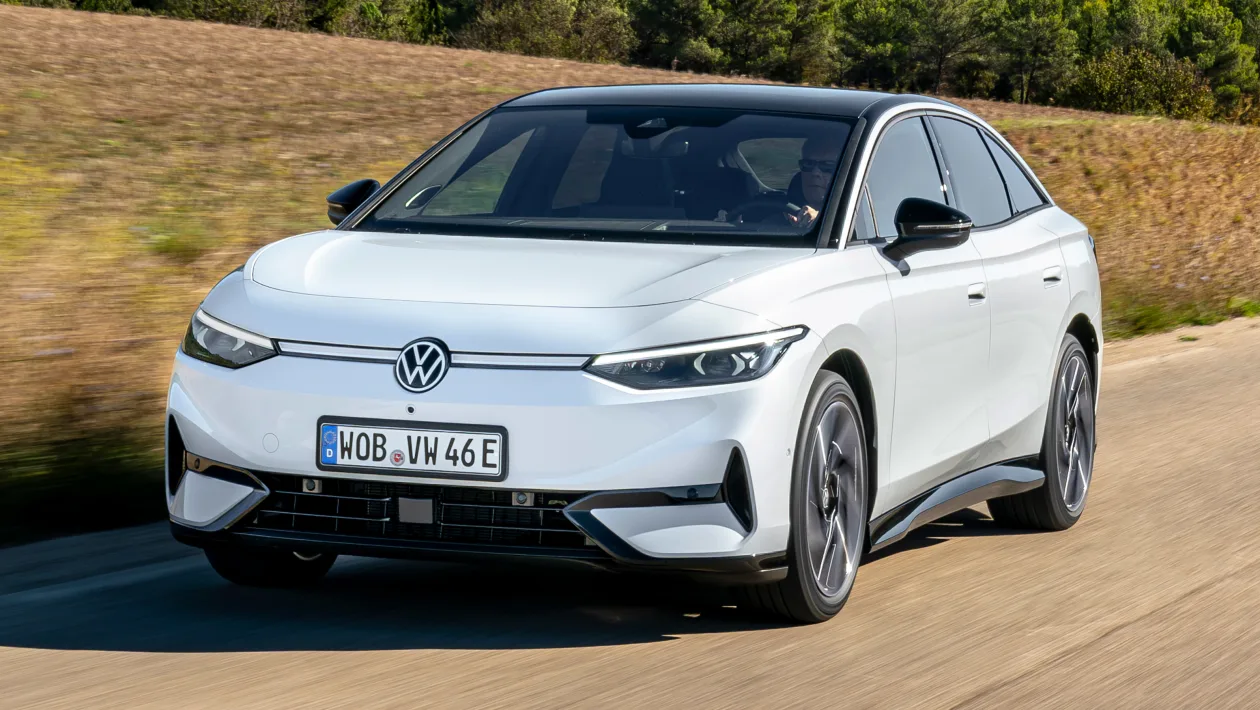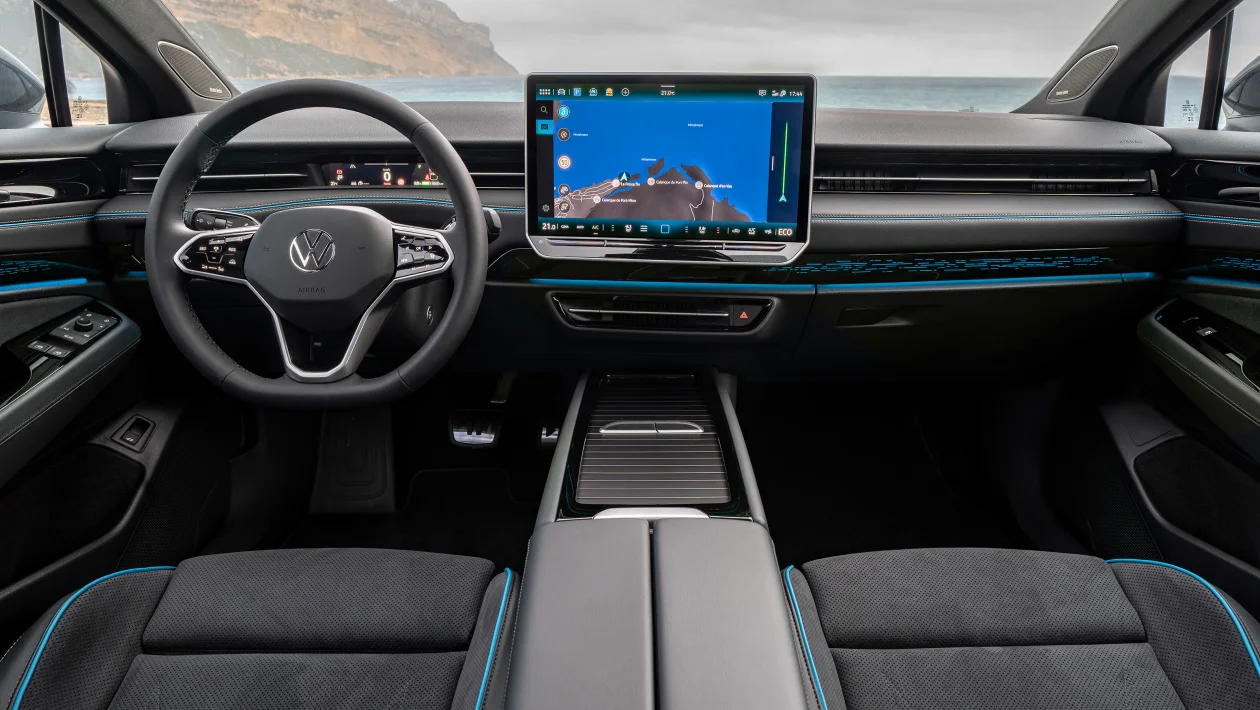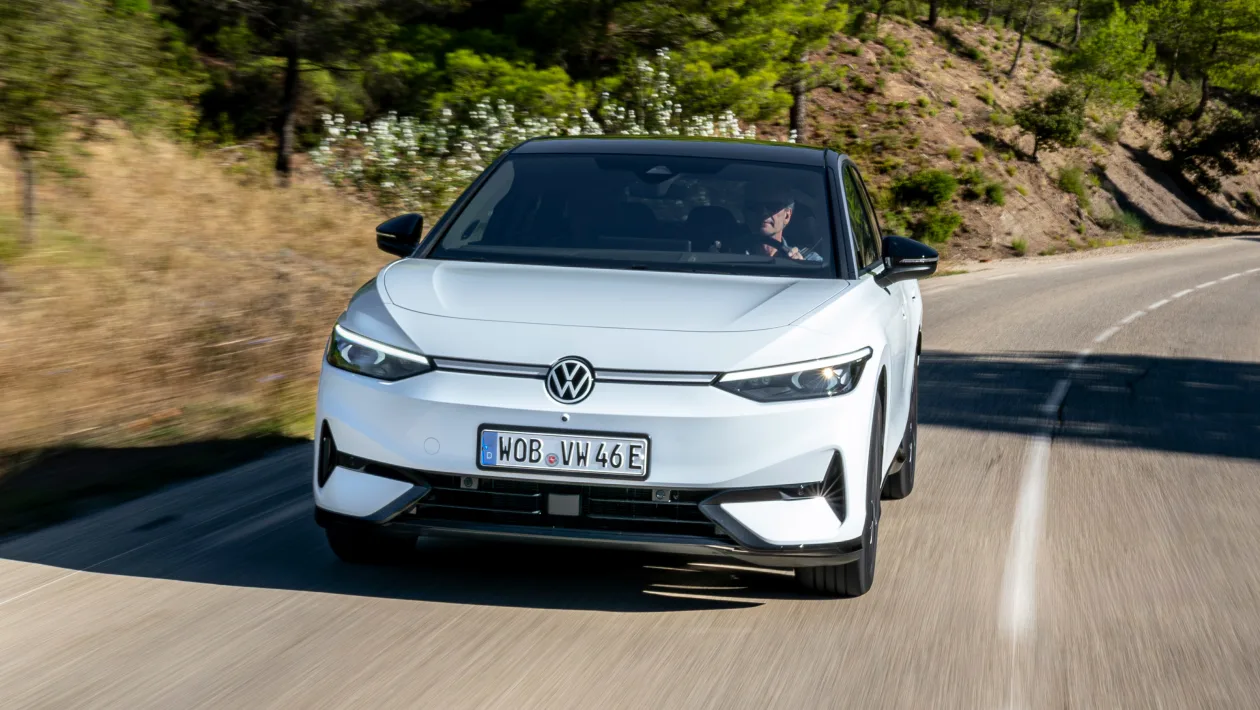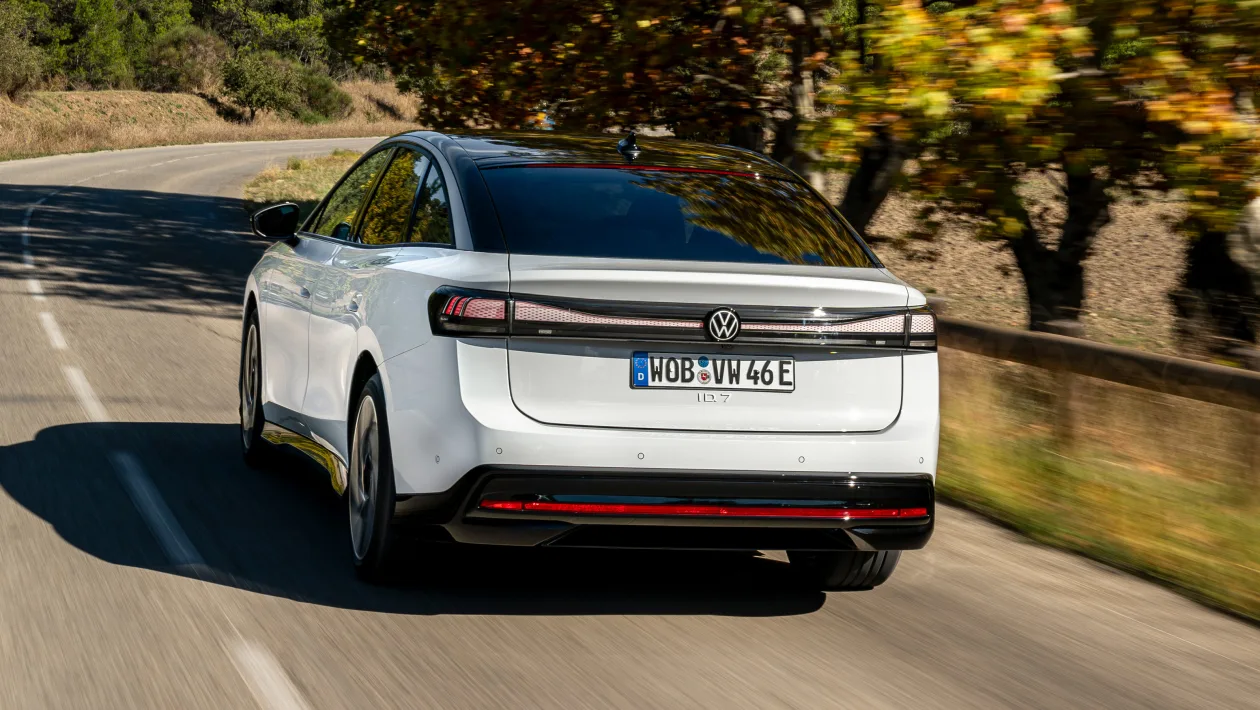While the Volkswagen ID.7 is pricey, it boasts impressive range and drives like a big VW should.
We’ve been made to wait for the Volkswagen ID.7. It was previewed by the ID. Vizzion way back in 2018, pitched (at the time) as an all-electric sedan that could replace the long-departed Phaeton limousine. All of that and it remains only a wish for Australia. Still, what’s this new electric VW drive like?
While the ID.7 certainly isn’t a fully-fledged Mercedes S-Class rival in terms of size, the VW’s dimensions are closer to the likes of the BMW i5 and Mercedes EQE than compact executive electric cars like the Tesla Model 3 and Polestar 2. VW claims the ID.7 will be its flagship electric model, and will soon also be offered in ‘Tourer’ estate guise.
When we drove the ID.7 in prototype form earlier this year, we came away impressed with the technology, space and the overall driving experience. It gave us optimism about Volkswagen’s line up of all-electric ID-badged models, after the lacklustre ID.3 and flawed ID.4 and ID.5.
Rivals for the ID.7 include the newly-facelifted Tesla Model 3, Hyundai Ioniq 6 and the more premium BMW i5.
The ID.7 boasts a couple of great headline figures when it comes to range. With its 77kWh battery and sleek 0.23 drag coefficient, the Pro offers up to 615km; the larger 82kWh battery in the Pro S promises as much 700km. To put that into perspective, a Model 3 Long Range tops out at 678km, and an Ioniq 6 can only do 544km. Even the most efficient Polestar 2 Long Range runs out of juice after 653km.
During the ID.7 product briefing, VW made another connection to the Phaeton with regards to the space on offer inside. Indeed, back seat passengers will have no issue getting comfortable behind tall adults; there’s acres of legroom and the panoramic roof allows for extra headroom front and rear. That glass roof can also be immediately altered between opaque and transparent with a touch of a button should you specify the ‘Smart Glass’ option.
Between the front seats there’s a cavernous storage compartment with two sliding lids that adjoin, and the split-folding armrests with further storage is a nice touch. Elsewhere, the ID.7 goes for a fairly clean (if not a little dull) look with a lack of physical buttons. It’s not the eye-catching minimalist affair of a Tesla, nor is it like the slightly wacky, digitised cabin of an Ioniq 6, but the ID.7 all feels pretty well screwed together as a whole.
Breaking up the strip of vents that run from pillar to pillar are two displays. The middle one is a huge 15-inch touchscreen and it incorporates a massive amount of functionality. There are no switches on the vents to adjust the direction of airflow – this is done via the touchscreen – although using the ID.7’s ‘IDA’ voice command system allows you to move them to move independently.
The ID.7 uses VW’s latest infotainment system and it’s a neat design with submenus that are easy to navigate. A slight gripe is the strip of shortcut widgets for the mapping, entertainment and drive modes, which are a little small and bunched together at the top of the screen, meaning you do need to concentrate more than you should when selecting these. We’d much prefer the older physical selection, whereby all you needed was readily available.
In front of the driver is a relatively titchy digital instrument cluster that apes the one introduced on the Skoda Enyaq. We quite like it because it’s simple and has all the core intel you require – we expect this has been done to place greater emphasis on the head-up display’s readout however, which is only pleasant to use when the distracting virtual reality integration is off.
The temperature adjustment is controlled by a horizontal strip below the screen; it’s not our favourite way of changing the climate settings, but at least it’s backlit – unlike the ID.3, and many other current Volkswagen Group products. With CEO Thomas Schafer’s new direction, VW is supposed to be making a bit of U-turn in terms of cabin digitisation, and we can only hope the ID.7’s naff steering-wheel touchpads are replaced with proper buttons at some point.
Boot space is more than adequate at 500 litres, besting rivals from Tesla, Hyundai, BMW and Polestar, but the shape of the boot is a little narrow 63 litres smaller than the similarly-sized Volkswagen Arteon. It’s also a shame that the front bonnet doesn’t open to reveal a space for carrying the charge cables.
Prior to driving the ID.7, a few VW representatives were keen to point out the car’s extensive development phase designed to make it feel as sporty as possible. First impressions are that the ID.7 is a big, heavy electric saloon – no surprise given it weighs a portly 2172kg.
Even though it’s longer than an ID. Buzz, the surprisingly small turning circle of 10.9 metres, plus light steering, makes the ID.7 feel smaller than it is. This makes it pretty easy to judge the ID.7 around town; our test route included driving through some tight Marseille back roads, and the only qualm we have with visibility is the back window which is a little on the small side.
There are only two brake regeneration settings (on or off), activated by flicking the steering wheel column mounted stalk away from you – just as you would in the ID.3 or ID.4. The regen is pretty strong, almost allowing for full one-pedal driving, but we’d like some extra adjustability here.
The chassis of the ID.7 comes with a Macpherson front end and a multi-link rear with adaptive damping that VW calls ‘Dynamic Chassis Control’ (DCC). As you’d expect there’s a series of self-explanatory driving modes with Comfort, Eco, Sport and Individual.
The ID.7’s spring rate is naturally quite soft to deal with the lofty kerbweight, and when the dampers are slackened off (you can go beyond Comfort and Sport to manually choose from 15 settings), the ID.7 feels too easily unsettled, with pronounced body roll through the bends. When you’re in a stiffer damping mode the body feels more taut, but the extra jiggle from road imperfections isn’t that much worse.
Overall though, the ID.7 rides very well indeed. The comfortable ergoPremium seats are new for the brand’s flagship and come with a host of massage functions, along with ventilation and heating. These are all operated from the touchscreen, which again we’d prefer in physical button format.
We drove the Pro model, and at the time of writing VW was still deciding on what equipment each trim level will get. We do know, however, that the Pro comes with the 77kWh battery with a single, rear-mounted electric motor. With 207kW and 545Nm of torque, the ID.7 Pro feels punchy enough despite the ID.7’s size and weight.
There is an immediate thrust from the electric motor and it follows this up with a nice linear distribution of torque. But for real excitement we might have to wait for the dual-motor GTX variant that VW has already teased; as it stands, the ID.7 isn’t as rapid in a straight line as entry-level versions of the Model 3 and Polestar 2.
What is really surprising with the ID.7 is how well it handles. The steering is a little synthetic, but it adds just the right amount of weight at speed and the front end is quick to respond, too. In Sport mode you’ll occasionally notice a slight loss of traction, making the rear-driven ID.7 feel quite playful. It’s just as easy to overwork the front wheels though, should you get too boisterous with your steering inputs.
The ID.7 might be Volkswagen’s best ID product to date, although it’s still not perfect. It concedes points for its slightly gloomy interior and it’s rather pricey, but the range is impressive and it drives like a big Volkswagen should.








